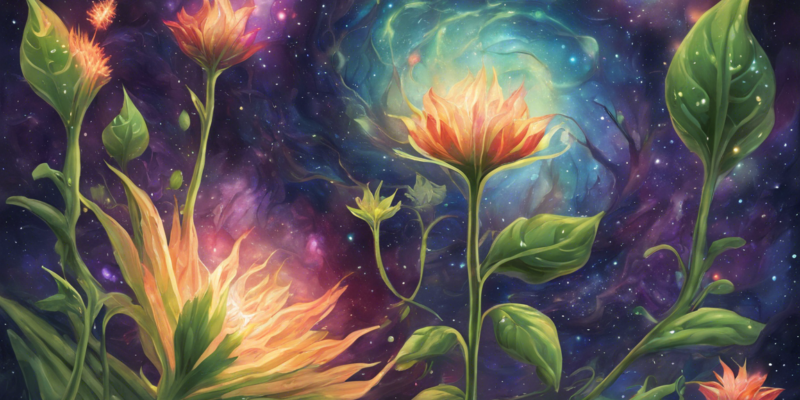Introduction
Indoor gardening has become an increasingly popular way for individuals to bring a touch of nature into their homes while also enjoying the therapeutic benefits of caring for plants. With advancements in technology and an abundance of resources available, indoor gardening has become more accessible to a wider audience. For those looking to venture into the world of indoor gardening, this comprehensive guide will provide you with the necessary information to create your own plant oasis within the confines of your home.
Benefits of Indoor Gardening
Indoor gardening offers a myriad of benefits for both the mind and body. Some of the key advantages include:
-
Improved Air Quality: Plants act as natural air purifiers by removing toxins and releasing oxygen, which can lead to a cleaner and healthier indoor environment.
-
Stress Relief: Caring for plants can have a calming effect and reduce stress levels, promoting overall well-being.
-
Enhanced Aesthetic: Indoor plants add a splash of color and texture to any space, enhancing the aesthetic appeal of your home.
-
Connection to Nature: Bringing nature indoors allows individuals to forge a deeper connection with the natural world, even in urban environments.
Choosing the Right Plants
Selecting the right plants is crucial for a successful indoor garden. Consider the following factors when choosing plants for your indoor space:
-
Light Requirements: Assess the amount of natural light available in your home to determine the type of plants that will thrive in your space. Plants are typically categorized as low, medium, or high light plants.
-
Space Constraints: Consider the size of your indoor space and choose plants that will fit comfortably within the available area. Vertical gardening and hanging planters are great options for small spaces.
-
Maintenance Level: Be honest about the time and effort you can dedicate to plant care. Choose plants that align with your maintenance capabilities, whether you prefer low-maintenance succulents or more demanding tropical plants.
-
Personal Preference: Select plants that resonate with you aesthetically. Whether you prefer flowering plants, foliage plants, or a mix of both, choose plants that bring you joy.
Essential Tools and Supplies
To set up your indoor garden, you will need a few essential tools and supplies to ensure your plants thrive:
-
Pots and Planters: Choose containers that provide adequate drainage for your plants. Ensure that the pots are the appropriate size for your plant’s root system.
-
Potting Mix: Select a high-quality potting mix that is suitable for indoor plants. Avoid using regular garden soil, as it may not provide the necessary nutrients and drainage.
-
Watering Can or Spray Bottle: Invest in a watering can or spray bottle to ensure that your plants receive the right amount of moisture.
-
Pruning Shears: Keep your plants healthy by trimming away dead or overgrown leaves with a pair of pruning shears.
-
Plant Food: Consider using a balanced fertilizer to nourish your plants and promote healthy growth.
Caring for Your Indoor Garden
Proper care is essential to the success of your indoor garden. Follow these tips to ensure your plants thrive:
-
Watering: Pay attention to your plant’s water needs and avoid overwatering, which can lead to root rot. Check the moisture level of the soil before watering.
-
Lighting: Position your plants in locations that provide the appropriate amount of light for their specific needs. Consider using grow lights for plants that require additional light.
-
Humidity: Indoor environments can be dry, especially during winter months. Increase humidity levels by misting your plants or using a humidifier.
-
Temperature: Most indoor plants prefer temperatures between 65-75°F (18-24°C). Avoid placing plants near drafts or heat sources.
-
Maintenance: Regularly inspect your plants for signs of pests, disease, or nutrient deficiencies. Address any issues promptly to prevent them from spreading.
Common Challenges in Indoor Gardening
Despite your best efforts, you may encounter challenges while tending to your indoor garden. Some common issues include:
-
Pests: Keep an eye out for common pests such as aphids, mealybugs, and spider mites. Treat infestations promptly to prevent damage to your plants.
-
Disease: Fungal diseases and root rot can occur in indoor plants, especially if overwatering is a problem. Ensure proper drainage and airflow to reduce the risk of disease.
-
Nutrient Deficiencies: Yellowing leaves, stunted growth, and leaf drop can be signs of nutrient deficiencies. Adjust your plant care routine or consider using a balanced fertilizer.
-
Lighting Issues: Insufficient light can result in leggy growth or lack of flowering in plants that require ample sunlight. Supplemental grow lights can help address lighting deficiencies.
-
Overwatering: One of the most common problems in indoor gardening is overwatering. Allow the soil to dry out between waterings to prevent root rot.
FAQs
- How often should I water my indoor plants?
-
The frequency of watering depends on factors such as plant type, room temperature, and humidity levels. Check the moisture level of the soil before watering.
-
Do indoor plants need fertilizer?
-
Indoor plants can benefit from occasional fertilization to maintain healthy growth. Use a balanced fertilizer according to the recommended dosage.
-
Can I place my indoor plants near a window with direct sunlight?
-
While some plants thrive in direct sunlight, others may be sensitive to intense light and prefer indirect sunlight. Monitor your plants’ response to determine the best placement.
-
How do I prevent overwatering my indoor plants?
-
Avoid overwatering by allowing the soil to dry out between waterings. Choose pots with drainage holes to prevent waterlogging.
-
What are some low-maintenance indoor plants for beginners?
- Succulents, pothos, snake plants, and spider plants are excellent choices for beginners due to their resilience and adaptability to various growing conditions.
In conclusion, indoor gardening offers a rewarding and fulfilling experience for plant enthusiasts of all levels. By selecting the right plants, providing proper care, and addressing common challenges, you can create a thriving indoor garden that adds beauty and tranquility to your living space. Take the time to explore the diverse world of indoor plants and discover the joys of cultivating your indoor garden oasis.


